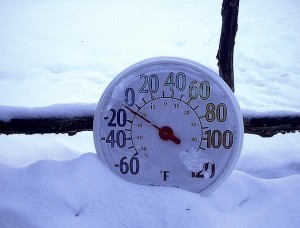3 Ways to Save on Your Heating Bill
 The cold-weather season’s finally upon us, which means it’s time to reassess our utility expenses.
The cold-weather season’s finally upon us, which means it’s time to reassess our utility expenses.
The U.S. Energy Information Administration released a short-term outlook last Wednesday on the expected price of fuel this winter. It shows the cost of heating your home is going to increase across the board. The EIA projects households will pay 19% more for heating oil and 15% more for natural gas than last winter. Expenditures for electricity and propane will also be 5% and 13% higher, respectively.
Heating your home could be expensive this year but with careful planning and a few small investments, you can cut costs. The Department of Energy has tips to help you stay warm this winter and protect your pursestrings.
Perform an Energy Check-Up
It may be worthwhile to invest in an energy audit that can help identify potential energy waste. It’ll uncover simple fixes, like replacing ventilation filters, that will improve your home’s performance. They can potentially cost a few hundred dollars, but can save you 15-30% on your heating bill, according to New York utility company Con Edison. Some utility companies do offer free or discounted audits to certain customers, so call your service provider first. Otherwise, you can seek from quotes from third-party auditors. The Residential Energy Services Network provides a directory of certified energy auditors in your area.
Seal the Cracks
Or, consider performing a DIY audit, by first inspecting leaks and cracks around windows. A $5 tube of caulk can go a long way in sealing off a whistling pane. Well-sealed heating and cooling ducts can improve your home’s efficiency by 20%, according to the Department of Energy. The agency has DIY instructions on where and how to seal air ducts. “Use duct sealant (mastic) or metal-backed (foil) tape to seal the seams and connections of ducts. After sealing the ducts in those spaces, wrap them in insulation to keep them from getting hot in the summer or cold in the winter,” the instructions say. You can also use “sweeps,” sealing strips for the bottoms of your doors, to block a draft from creeping in.
Invest In Efficiency
Lastly, the DOE suggests if your HVAC system is more than 10 years old that you replace it with a new ENERGY STAR system, which can save you up to $200 annually, according to the agency’s estimates. But before heading out to the nearest hardware store, DOE has a check-list to determine whether you should, in fact, purchase a new water heater of furnace. The least expensive investment you can make: A programmable thermostat. Set it to lower the temperature just after you leave for work and return just before you get home. A device around $50 can save you $180 every year in energy costs.
Photo Courtesy, BryanAlexander.




